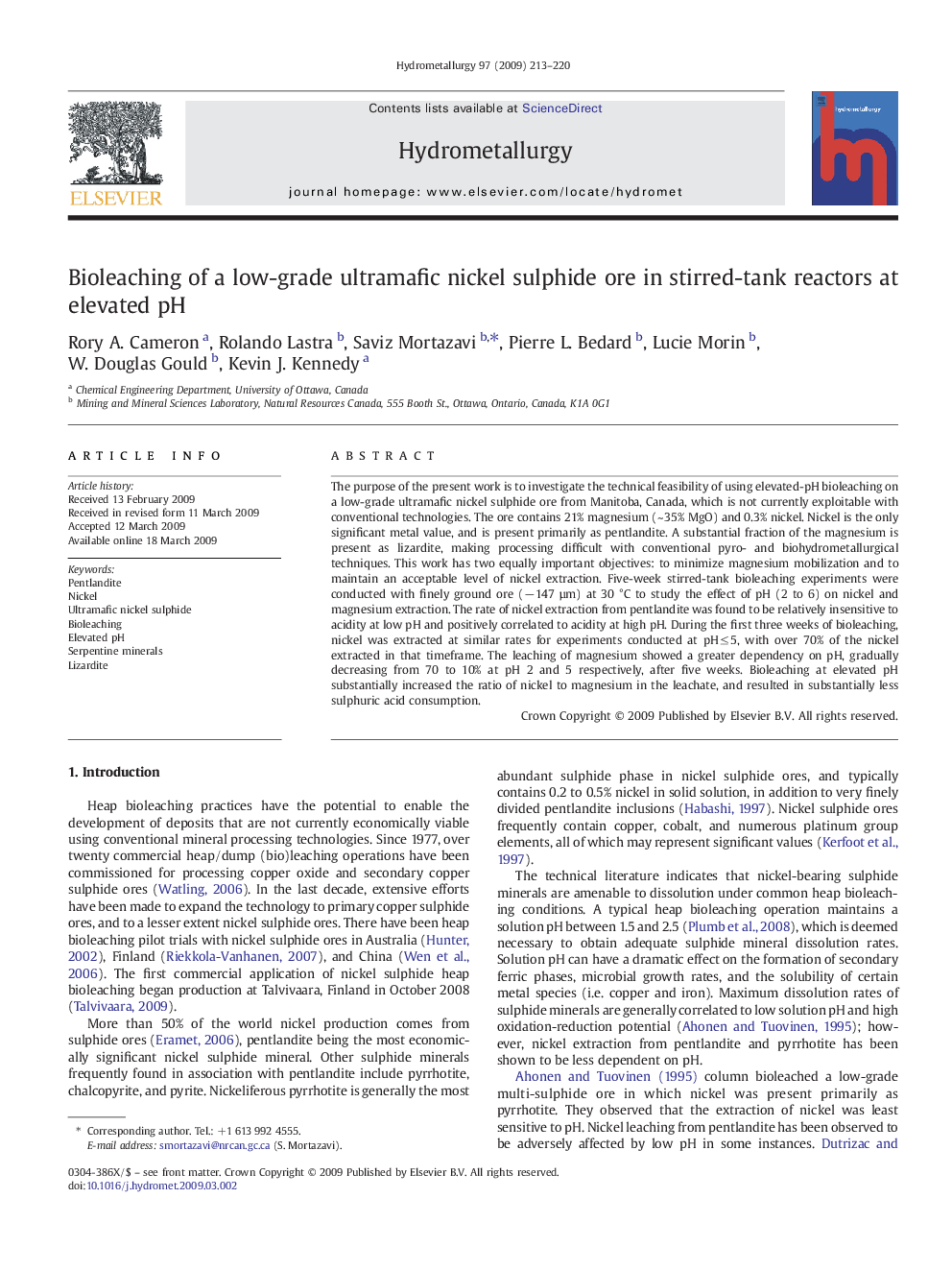| کد مقاله | کد نشریه | سال انتشار | مقاله انگلیسی | نسخه تمام متن |
|---|---|---|---|---|
| 212963 | 462074 | 2009 | 8 صفحه PDF | دانلود رایگان |

The purpose of the present work is to investigate the technical feasibility of using elevated-pH bioleaching on a low-grade ultramafic nickel sulphide ore from Manitoba, Canada, which is not currently exploitable with conventional technologies. The ore contains 21% magnesium (~ 35% MgO) and 0.3% nickel. Nickel is the only significant metal value, and is present primarily as pentlandite. A substantial fraction of the magnesium is present as lizardite, making processing difficult with conventional pyro- and biohydrometallurgical techniques. This work has two equally important objectives: to minimize magnesium mobilization and to maintain an acceptable level of nickel extraction. Five-week stirred-tank bioleaching experiments were conducted with finely ground ore (− 147 µm) at 30 °C to study the effect of pH (2 to 6) on nickel and magnesium extraction. The rate of nickel extraction from pentlandite was found to be relatively insensitive to acidity at low pH and positively correlated to acidity at high pH. During the first three weeks of bioleaching, nickel was extracted at similar rates for experiments conducted at pH ≤ 5, with over 70% of the nickel extracted in that timeframe. The leaching of magnesium showed a greater dependency on pH, gradually decreasing from 70 to 10% at pH 2 and 5 respectively, after five weeks. Bioleaching at elevated pH substantially increased the ratio of nickel to magnesium in the leachate, and resulted in substantially less sulphuric acid consumption.
Journal: Hydrometallurgy - Volume 97, Issues 3–4, July 2009, Pages 213–220